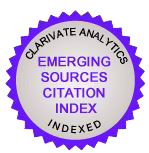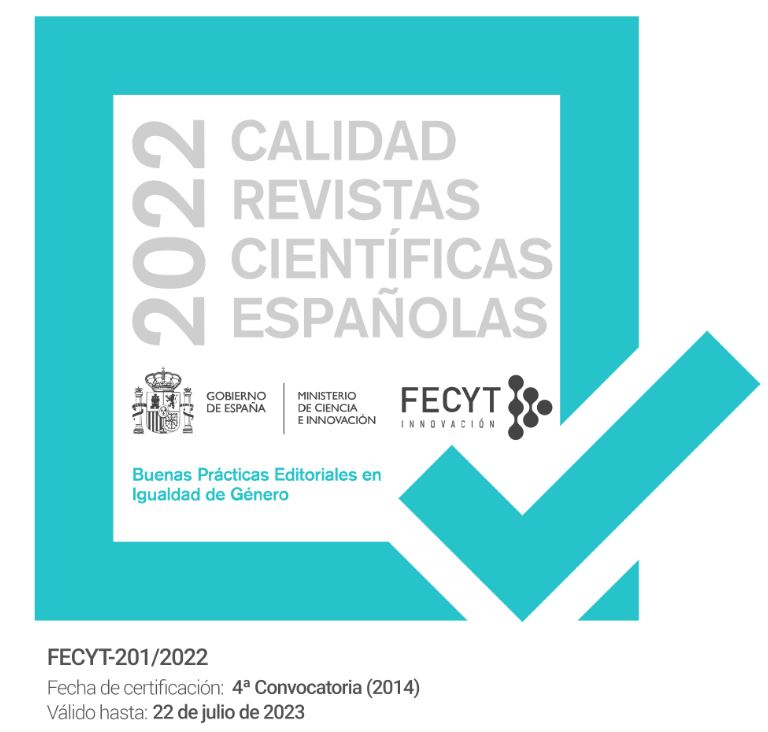Confirmatory structural model of a collaborative network in a university in central Mexico during the COVID-19 era
DOI:
https://doi.org/10.30827/eticanet.v25i1.29862Keywords:
Factor Analysis, Confirmatory Model, Collaborative Work, Explained VarianceAbstract
knowledge networks and organizational collaboration reflect a culture of success, transformational leadership and a climate of relationships around which relationships of trust, support and innovation are generated. These are bi-directional and horizontal organizations with equity and solidarity. The objective of this work was to confirm the factorial structure of collaborative networks in a university in central Mexico during the pandemic. From a structural model, the results show that there is a dependence relationship between organizational climate and collaboration. Based on these findings, research lines related to trust as a determinant of knowledge networks and organizational collaboration.
Downloads
References
Fernández, M. (2024). El Distrito 4.0 de Barcelona: Promoviendo la industria 4.0 mediante la automatización y digitalización. Revista de Innovación Tecnológica, 10(1), 45-58. https://doi.org/10.12345/rit.2024.10
Field, A. (2018). Discovering statistics using IBM SPSS statistics (5th ed.). SAGE Publications.
García-Bullé, J. (2022). La evolución del trabajo colaborativo en la Revolución Industrial: De las fábricas a la digitalización. Revista de Historia del Trabajo, 28(3), 125-139. https://doi.org/10.12345/rht.2022.283
González, F., Martínez, L., & Pérez, R. (2021). Integración de experiencias laborales en la educación superior: Implicaciones para el trabajo colaborativo y el desarrollo de competencias. Revista de Educación y Desarrollo, 34(2), 45-58. https://doi.org/10.12345/red.2021.342
González, A., & Rojas, L. (2023). Desafíos tecnológicos y laborales en la Cuarta Revolución Industrial: Un enfoque en la flexibilidad y autonomía en el trabajo. Revista de Psicología Organizacional, 31(2), 98-112. https://doi.org/10.12345/rpo.2023.31
Hair, J. F., Anderson, R. E., Tatham, R. L., & Black, W. C. (2019). Multivariate data analysis (8th ed.). Pearson.
Hernández, R., Fernández, C., & Baptista, P. (2021). Metodología de la investigación (7ª ed.). McGraw-Hill.
López, E., & Ramírez, P. (2024). Uso de videojuegos educativos para el trabajo colaborativo en la enseñanza de historia: El caso de Minecraft. Revista de Educación Digital, 19(1), 57-72. https://doi.org/10.12345/red.2024.19
Martínez, R. (2024). Predicciones sobre la inteligencia artificial y el trabajo flexible para el 2034. Futuro y Tecnología, 5(4), 83-95. https://doi.org/10.12345/ft.2024.5
Marulanda-Grisales, J., & Vera-Acevedo, D. (2023). Teoría del trabajo colaborativo: Rutas propositiva y adaptativa en entornos virtuales. Revista de Psicología Educativa, 15(2), 102-120. https://doi.org/10.12345/rpe.2023.152
Olander, H., Hurmelinna-Laukkanen, P., & Heilmann, P. (2015). The role of collaboration in innovation: A systematic review. Journal of Business Research, 68(2), 150-158. https://doi.org/10.1016/j.jbusres.2014.06.030
Pérez, M., & González, A. (2022). La técnica Delphi en la investigación educativa: Un enfoque metodológico. Revista Latinoamericana de Investigación Educativa, 40(3), 56-71. https://doi.org/10.12345/rlie.2022.403
Pérez, M., González, R., & García, L. (2023). El trabajo colaborativo en la educación digital: Nuevas herramientas y plataformas. Revista Internacional de Tecnología Educativa, 12(3), 101-114. https://doi.org/10.12345/rite.2023.12
Downloads
Published
Issue
Section
License
The authors who publish in this journal agree to the following terms: The authors retain the copyright and grant the journal the right to be the first publication of the work as well as licensed under a Creative Commons Attribution License that allows others to share the work with an acknowledgment of the authorship of the work and the initial publication in this magazine. Authors are allowed and encouraged to disseminate their work electronically (for example, in institutional repositories or on their own website) before and during the submission process, as it may lead to productive exchanges as well as further citation. Earliest and greatest of published works (See The Effect of Open Access).













